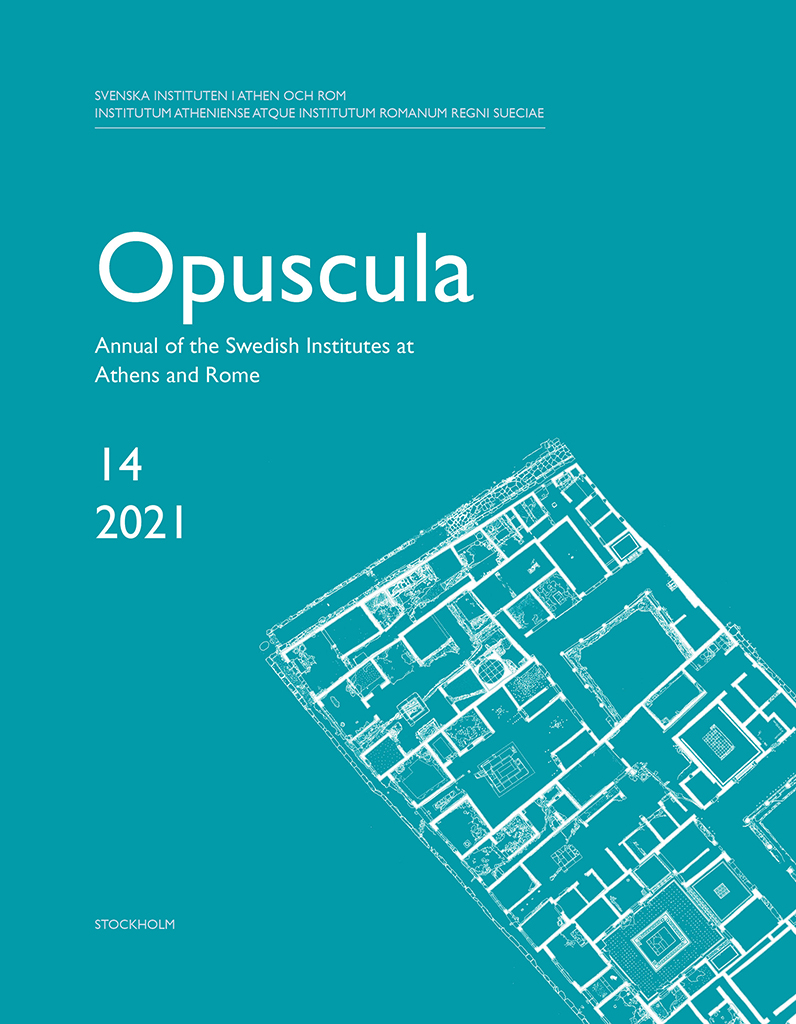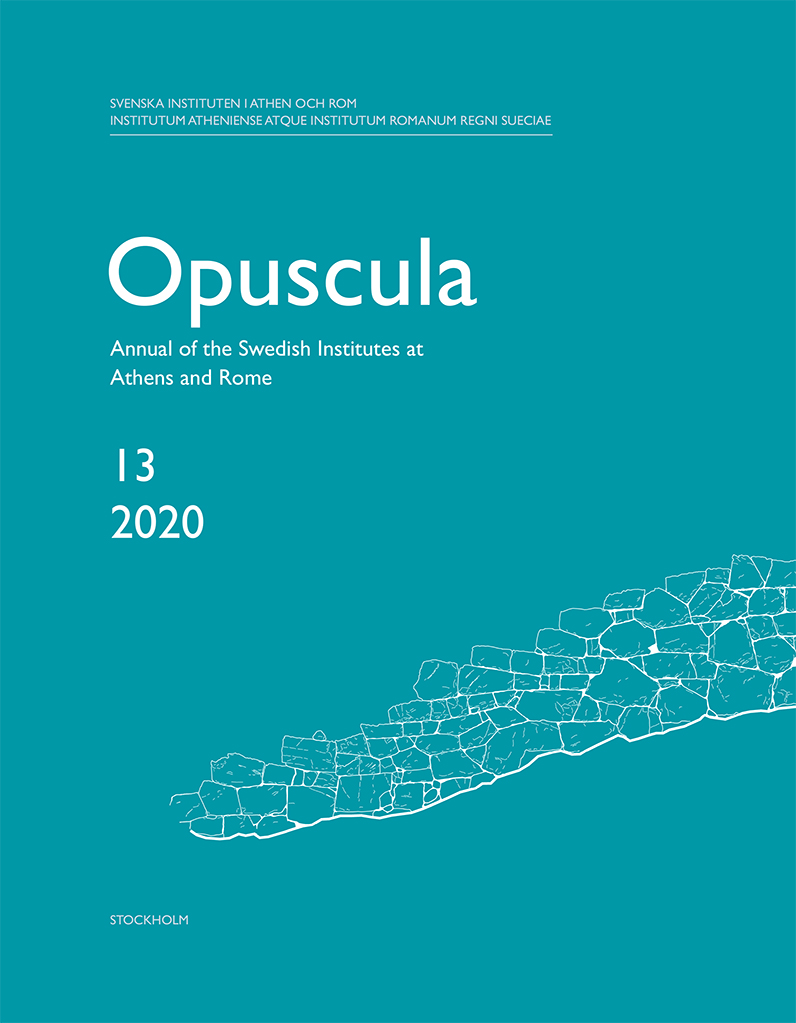Opuscula is published by the Swedish Institutes at Athens and Rome, with the aid of a grant from the Swedish Research Council. Distributed by Eddy.se AB. View journal at ERIH PLUS. All content available with open access. The key to Hermione? Notes on an inscribed monument By Jenny Wallensten (Swedish Institute at Athens, Greece) Abstract This article discusses an inscribed monument found during rescue excavations in the ancient city of Hermione. It provides an editio princeps for the one-word inscription and discusses the symbolism of its relief depiction of a temple key. The examination of the monument is followed by a discussion proposing a new perspective on how to approach the religious milieu of ancient Hermione. Bibliographical information Jenny Wallensten, ’The key to Hermione? Notes on an inscribed monument’, Opuscula. Annual of the Swedish Institutes at Athens and Rome (OpAthRom) 14, Stockholm 2021, 169-180. ISSN: 2000-0898. ISBN: 978-91-977799-3-7. Softcover, 478 pages. https://doi.org/10.30549/opathrom-14-10 Hermione. A Greek cityscape and its people The section on Hermione, published in OpAthRom 14, comprises six articles: Alcestis Papadimitriou | An ancient cityscape and its people: A study of ancient Hermione. Introductory remarks on historical sources and visible remains, archaeological research and prospects (pp. 65-76) Henrik Gerding | The topography of Hermione—A preliminary…
Opuscula is published by the Swedish Institutes at Athens and Rome, with the aid of a grant from the Swedish Research Council. Distributed by Eddy.se AB. View journal at ERIH PLUS. All content available with open access. Religion and family politics in Hellenistic Kalaureia. Three new inscriptions from the sanctuary of Poseidon By Nikolaos Papazarkadas (University of California, Berkeley, USA) & Jenny Wallensten (Swedish Institute at Athens, Greece) Abstract This article presents three unpublished Hellenistic inscriptions from the sanctuary of Poseidon in Kalaureia (modern Poros): two found during archaeological excavations on the site and one recorded in a letter that was once part of Ioannis Kapodistrias’ official correspondence. All three inscriptions were dedicatory and carved on bases supporting portrait statues. Interestingly, they were offered to Poseidon by members of a single family already known from other documents in the Kalaureian epigraphic corpus. Remarkably, eight out of the 18 inscriptions discovered in Kalaureia make repeated references to men and women of this very family, which appears to have materially dominated Poseidon’s temenos and its environs during the 3rd and 2nd centuries BC through the careful placement of portraits of its members. Most of these statues were conspicuously placed by the entrance…


